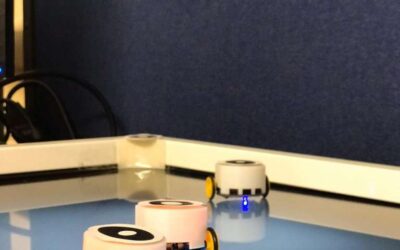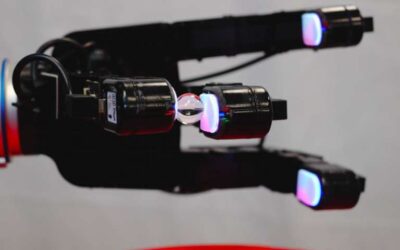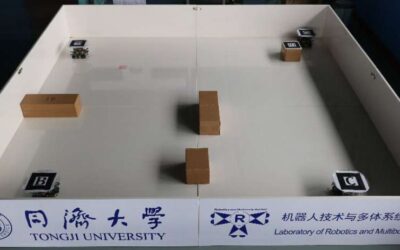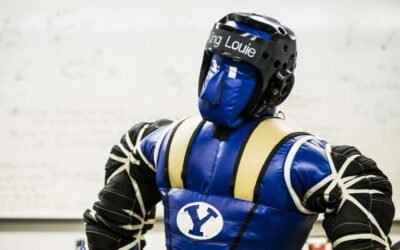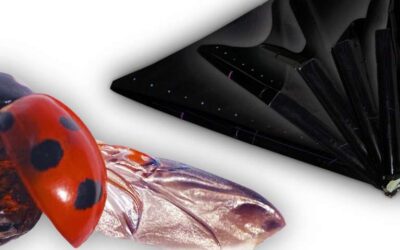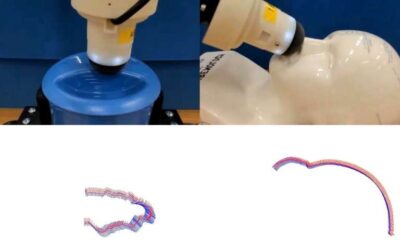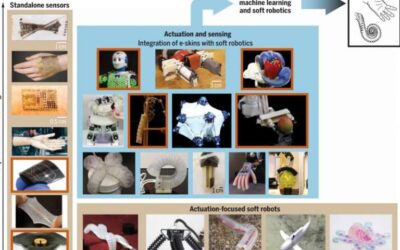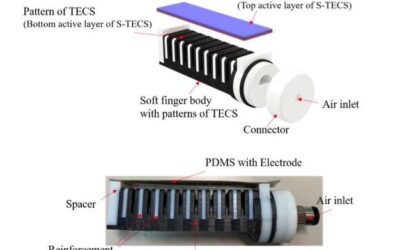Neurons, specialized cells that transmit nerve impulses, have long been known to be a vital element for the functioning of the human brain. Over the past century, however, neuroscience research has given rise to the false belief that neurons are the only cells that...
Robotics
A system for swarm robotics applications inspired by pheromone communication in insects
Nature is one of the most valuable sources of inspiration for researchers developing new robots and computational techniques. Over the past few decades, technological advances have enabled the creation of increasingly sophisticated systems replicating naturally...
DIGIT: A high-resolution tactile sensor to enhance robot in-hand manipulation skills
To assist humans in completing manual chores or tasks, robots must efficiently grasp and manipulate objects in their surroundings. While in recent years robotics researchers have developed a growing number of techniques that allow robots to pick up and handle objects,...
A scheme to enhance how swarm robots search for multiple targets
Over the past decade or so, researchers have been trying to develop techniques that could enable effective collaborative strategies among teams of robots. One of the tasks that teams of robots could complete better than individual robots is simultaneously searching...
A new approach to control the stiffness and position of inflatable robots
Robots that are made of flexible materials that can be inflated have a number of desirable properties, including their light weight and high levels of compliance (i.e. the ability to undergo elastic deformation). These qualities make them ideal for completing tasks in...
KUBeetle-S: An insect-inspired robot that can fly for up to 9 minutes
Researchers at Konkuk University in South Korea recently created KUBeetle-S, a flying robot inspired by a species of horned beetle called Allomyrina dichotomy, which is among the largest insects on the planet. Allomyrina dichotomy weighs approximately 5 to 10 g and...
An origami-based robotic structure inspired by ladybird wings
Researchers at Seoul National University have recently developed a compact and lightweight origami structure inspired by ladybird beetles. In a paper published in Science Robotics they show how this structure can be used to build a winged jump-gliding robot....
Using deep learning to give robotic fingertips a sense of touch
Researchers at the University of Bristol have recently trained a deep-neural-network-based model to gather tactile information about 3-D objects. In their paper, published in IEEE Robotics & Automation Magazine, they applied the deep learning technique to a...
Reviewing progress in the development of machine learning-enhanced e-skins
Researchers at University of California, Yale University, Stanford University, University of Cambridge and Seoul National University have recently carried out a study reviewing recent efforts in the development of machine-learning-enhanced electronic skins. Their...
A soft robotic finger fabricated using multi-material 3D printing
Researchers at Zhejiang University of Technology, Tianjin University, Nanjing Institute of Technology and Ritsumeikan University have recently created a soft robotic finger that integrates a self-powered curvature sensor using multi-material 3-D printing technology....


